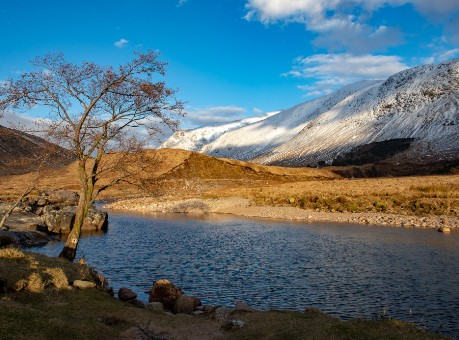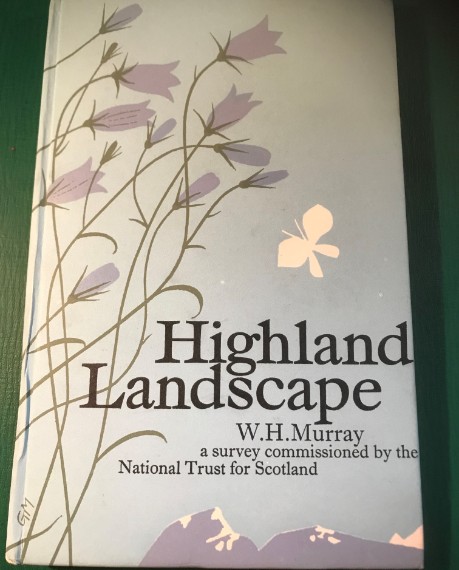Wednesday 6th March 2019, 2:37pm
The concern raised by the outdoor community over three proposed hydro schemes in Glen Etive is an indication of how highly this mountain massif is regarded at a national level.
This national importance has been officially recognised from the 1940s, when it was proposed as part of a national park, to the present day when it holds the highest accolade for landscape value.
The Glen Etive mountains currently enjoy recognition as one of Scotland’s top landscapes, lying as they do within a National Scenic Area and also a Wild Land Area, in recognition of an area that is a wonderful natural landform with steep mountains cut by glens. It also, until now, has been only lightly touched by human activity.
The three proposed hydropower schemes in Glen Etive, on the Allt Chaorainn, Allt Ceitlein, and Allt Mheuran, would be situated in wild land, in a National Scenic Area. The Wild Land Area was defined in 2014, the National Scenic Area in 1980, but this mountain range had been of landscape interest well before then.
In the early days of landscape planning, in 1945, a report to the Government by the Scottish National Parks Survey Committee identified the Glen Nevis-Glen Coe-Black Mount area as one of five potential National Parks for Scotland. This arose from the inter-war interest in open-air recreation, and the survey was commissioned by the then Department of Health for Scotland. Politics intervened and nothing was progressed from this report.
In 1961, the National Trust for Scotland appointed W. H. Murray to make a landscape survey of highland counties. The Trust commissioned this because although architecture was protected by ‘Listed Building’ status, no landscape equivalent was in place. The Trust thought that this was an omission in the planning process, and this survey was to go toward filling that policy gap.
Bill Murray was a renowned mountaineer who had for the preceding 30 years explored and climbed the hill country of North and West Scotland, as well as the Alps and Himalayas. Even today he remains a respected figure in Scottish mountaineering.
The task was “To identify and describe the regions of supreme landscape value.” This must have been a labour of love for him as, reading his books on mountaineering in Scotland, one is struck by his appreciation of the setting as well as an eye for the fine detail.
Fifty-two areas were surveyed and twenty-one identified as “outstanding in point of natural beauty”. These areas went on to form a basis for the identification of National Scenic Areas twenty years later.

Glen Etive. Photo by Richard Cross.
In his report to the National Trust for Scotland, who subsequently published it as a book, “Highland Landscape”, Glen Etive was unsurprisingly included. Survey No18, The Blackmount, Rannoch and Glencoe includes the Glen Etive peaks whose lower reaches are now subject to the proposed hydropower developments, name-checking Ben Starav and Stob Coire an Albannaich, while reserving the best climbing in the range for Stob Ghabhar.
Although a mountaineer appreciating the high tops, he did not overlook the lower reaches, and it is worth quoting Murray’s comment: “The glen is made alive by the River Etive, adorned throughout with magnificent pools and short waterfalls.” It is some of these ‘short waterfalls’ that are at risk from the current hydropower proposals. This comes back to his criteria: outstanding natural beauty.
Beauty is a word not much used in planning circles, but what Murray was identifying was the interplay of the senses in the landscape, not a tick-list of features. Or maybe we express it as the wild qualities that we appreciate today, as we walk up into the hills.
Why is this planning proposal important to us? Two of the hydro schemes are directly on the route up to four Munros that form the watershed above the glen, well defined walking routes that are in the SMC guide. Not only for walkers wanting Munros, the watershed contains twenty-two tops over 700m in altitude. This is a major walking resource, with tops of varying levels of difficulty and strenuousness – which brings us back to the first survey, which was looking at open-air recreation as being in the national interest, as well as Murray’s ‘outstanding natural beauty’. Modern research backs up that recognition of the importance of open-air recreation, with recent NHS reports underlining the mental as well as the physical health benefits at a time when stress and inactivity are increasingly recognised as a threat to both health and the economy.
This is why Mountaineering Scotland is standing up and challenging assessments that downplay the value, the importance, the significance of the Etive Mountains. Standing beside Bill Murray, we celebrate the natural beauty and fight for its protection today.

Bill Murray's classic report on the importance and beauty of Scotland's landscape.

Since our foundation as the Mountaineering Council of Scotland nearly 50 years ago, Mountaineering Scotland has been representing the interests of hill walkers, mountaineers, climbers and snowsports tourers in Scotland. We work closely with our members, the media, partner organisations, local and national government and landowners to make a real difference on the matters that affect us all.
By becoming a member of Mountaineering Scotland, you are supporting this work and adding your voice to that of 14,000 other members by getting involved in our campaigns.
Our membership package includes insurance, discounts, quarterly magazine, subsidised mountain skills training and more.